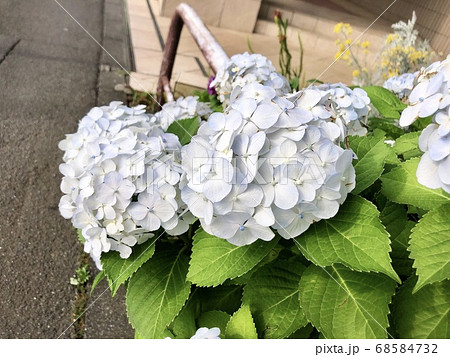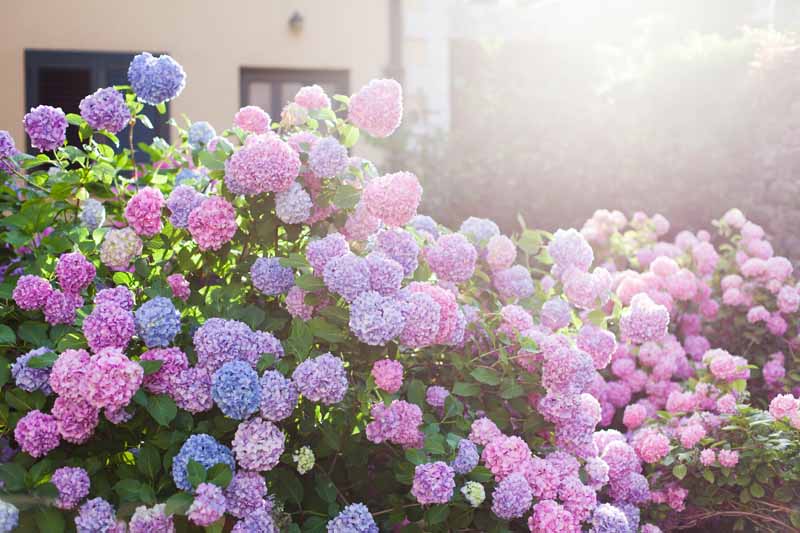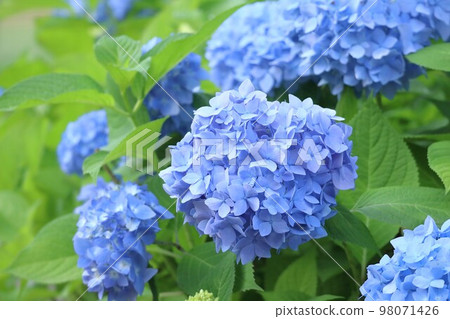Japanese Hydrangea: The Ultimate Guide To Growing And Caring For These Stunning Blooms
Japanese Hydrangea: The Ultimate Guide to Growing and Caring for These Stunning Blooms
Hydrangeas are some of the most popular flowering shrubs in the world, and for good reason. They come in a wide variety of colors, sizes, and shapes, and their large, showy blooms can brighten up any garden. Japanese hydrangeas (Hydrangea macrophylla) are a particularly popular type of hydrangea, known for their large, mophead blooms that can be blue, pink, or purple.
If you're thinking about adding a Japanese hydrangea to your garden, here is everything you need to know about growing and caring for these stunning blooms.
Introduction
Japanese hydrangeas are native to Japan and Korea, and they thrive in cool, humid climates. They can be grown in full sun or partial shade, but they will produce the best blooms in full sun. Japanese hydrangeas prefer well-drained soil that is rich in organic matter. The soil pH should be between 5.5 and 6.5.
Planting
Japanese hydrangeas can be planted in the spring or fall. When planting, dig a hole that is twice as wide and as deep as the root ball of the plant. Backfill the hole with soil, and water the plant thoroughly.
Watering
Japanese hydrangeas need regular watering, especially during the first year after planting. Water the plant deeply once a week, or more often if the weather is hot and dry.
Fertilizing
Japanese hydrangeas should be fertilized in the spring and fall. Use a balanced fertilizer, such as 10-10-10, and follow the directions on the label.
Pruning
Japanese hydrangeas do not need to be pruned heavily. However, you can trim the plant in the spring to remove dead or damaged branches. You can also prune the plant to shape it or to encourage more blooms.
Winter Care
In cold climates, Japanese hydrangeas may need to be protected from the cold. Mulch the soil around the plant with a layer of 3-4 inches of organic matter, such as leaves or pine needles. You may also need to cover the plant with a burlap sack or other protective material.
Troubleshooting
If your Japanese hydrangea is not blooming, there are a few possible reasons. First, make sure the plant is getting enough sunlight. Japanese hydrangeas need at least 6 hours of sunlight per day. Second, check the soil pH. If the soil is too alkaline, the flowers will be white or cream-colored. You can lower the soil pH by adding sulfur or aluminum sulfate to the soil. Finally, make sure the plant is getting enough water. Japanese hydrangeas need regular watering, especially during the summer months.
Conclusion
With proper care, Japanese hydrangeas can be a beautiful and long-lasting addition to your garden. With their large, showy blooms, Japanese hydrangeas are sure to turn heads and brighten up your yard.
Japanese hydrangeas, also known as ajisai, are a beautiful and iconic flower that is synonymous with the rainy season in Japan. With their large, showy blooms that come in a variety of colors, hydrangeas are a popular sight in gardens and parks across the country.
If you're interested in learning more about Japanese hydrangeas, I recommend visiting the website . This website is a comprehensive resource for all things hydrangea, with information on the different types of hydrangeas, how to care for them, and where to see them in bloom.
In addition to its informative articles, the website also features a beautiful photo gallery of Japanese hydrangeas in bloom. Whether you're a gardening enthusiast or simply an admirer of beautiful flowers, I'm sure you'll find something to enjoy on the website .
FAQ of japanese hydrangea
1. What are the different colors of Japanese hydrangeas?
Japanese hydrangeas can bloom in a variety of colors, including white, pink, blue, purple, and green. The color of the flowers is determined by the acidity of the soil. In alkaline soil, the flowers will be blue or pink. In acidic soil, the flowers will be purple or green. You can change the color of the flowers by adding aluminum sulfate to alkaline soil or by adding sulfur to acidic soil.
2. What are the care requirements for Japanese hydrangeas?
Japanese hydrangeas are relatively easy to care for. They need full sun or partial shade and well-drained soil. They should be watered regularly, especially during hot, dry weather. Japanese hydrangeas are not very drought-tolerant. They should be fertilized once a year in the spring with a balanced fertilizer.
3. How do I deadhead Japanese hydrangeas?
Deadheading is the process of removing spent flowers. This helps to encourage new blooms and keep the plant looking its best. To deadhead Japanese hydrangeas, simply pinch off the spent flowers with your fingers or use a pair of scissors. Be sure to cut the flower stems back to the next set of leaves.
4. How do I overwinter Japanese hydrangeas?
In most climates, Japanese hydrangeas are hardy to USDA zones 3-9. However, in colder climates, they may need to be protected from the cold during the winter. To overwinter Japanese hydrangeas, you can either dig them up and store them in a cool, dry place, or you can mulch them heavily and leave them in the ground. If you choose to dig up the plant, be sure to do it in the fall, after the leaves have fallen. Store the plant in a cool, dry place and water it occasionally. In the spring, replant the hydrangea in the garden.
5. What are some common pests and diseases of Japanese hydrangeas?
Some common pests of Japanese hydrangeas include aphids, spider mites, and scale insects. These pests can be controlled with insecticidal soap or neem oil. Some common diseases of Japanese hydrangeas include leaf spot, powdery mildew, and rust. These diseases can be prevented by watering the plant at the base and avoiding overhead watering. If the plant does become infected, you can treat it with a fungicide.
Image of japanese hydrangea
5 different images of Japanese hydrangeas from Pinterest:
- A white Japanese hydrangea in full bloom. The flowers are large and round, with a delicate white color. They are arranged in a cluster on top of a long stem. The hydrangea is surrounded by green leaves.

- A pink Japanese hydrangea in full bloom. The flowers are smaller than the white hydrangea, but they are also more vibrantly colored. They are arranged in a cluster on top of a short stem. The hydrangea is surrounded by dark green leaves.

- A purple Japanese hydrangea in full bloom. The flowers are a deep purple color. They are arranged in a cluster on top of a tall stem. The hydrangea is surrounded by light green leaves.

- A Japanese hydrangea with blue flowers. The flowers are a light blue color. They are arranged in a cluster on top of a short stem. The hydrangea is surrounded by dark green leaves.

- A Japanese hydrangea with multi-colored flowers. The flowers are a mix of white, pink, and purple. They are arranged in a cluster on top of a tall stem. The hydrangea is surrounded by dark green leaves.

Post a Comment for "Japanese Hydrangea: The Ultimate Guide To Growing And Caring For These Stunning Blooms"